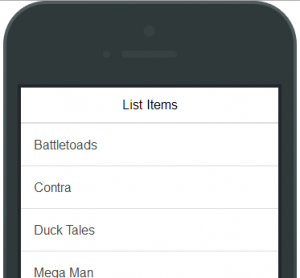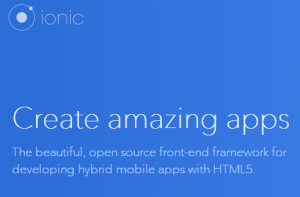Tag Archives: ionicframework
Ionic – How to Access or Browse SQLite Database
The blog represents instructions on how could you access or browse SQLite database embedded in your android app. The way that works for me is to copy the database on to my system and access the same. Make sure you connected your mobile phone to your laptop/desktop. Check with command “adb devices” to see that your device (phone) is listed. Following commands can be used to get the Cordova SQLite database on your hard-disk filesystem: adb shell run-as package-name-of-the-app chmod 666 databases/database_name exit cp /data/data/package-name-of-app/databases/database_name /sdcard/ run-as package-name-of-the-app chmod 600 databases/database_name exit; exit Once you are on system command prompt, execute following command to copy the database file to current directory …
8 Reasons to Migrate to Ionic 2 Framework

This article represents some of the key reasons why one would want to adopt or migrate to Ionic 2. I am doing for my apps soon. Read out the original announcement on this page. Please feel free to comment/suggest if I missed to mention one or more important points. Also, sorry for the typos. Significant Performance Improvements: Leverages Angular 2 thereby bringing significant performance boosts to the ionic apps. Additionally, some of the following improvements brought by Angular 2 will further boost the Ionic 2 adoption: Server-side rendering cross-platform views Web workers Improved Overall Navigation: The way ionic pages were navigated in past, especially, between standard and tabbed pages was …
Ionic App – Automated Release APK Creation – Shell Commands
This article represents code samples which could be used to automate Ionic App release APK file creation further to which this APK file can be uploaded to Google Playstore and released. Please feel free to comment/suggest if I missed to mention one or more important points. Also, sorry for the typos. Commands to Automate Building Ionic App Release APK Copy and paste following commands in a file named as release.bat. When ready to release, execute “release.bat” on the command prompt and you should have an APK file created for releasing it to playstore. Following are key points to be noted: Before executing below commands, one would be required to create …
5 Steps to Release Your Ionic App to Google Playstore
This article represents tips/steps and code sample which can be used to release your ionic app on Google playstore. Please feel free to comment/suggest if I missed to mention one or more important points. Also, sorry for the typos. Create Release Build Following command can be used to create release build for Android. This will generate a release build based on the settings in your config.xml. For every new release, you may want to change the version in config.xml file. cordova build –release android By executing above command in the home directory, one could find generated apk file with name such as android-release-unsigned.apk in the path platforms/android/build/outputs/apk. Create One-time Private …
Ionic Framework – How to Create an Ionic App without Side Nav Menus
This article represents tips and code samples on creating an ionic app without side menus. Note the “menu.html” and “login.html” file for the code to include appropriate header text. Please feel free to comment/suggest if I missed to mention one or more important points. Also, sorry for the typos. Following are the key files required to make such an Ionic App: App.js to manage states Controllers.js to include controllers Menu.html to include code related with navigation Login.html to include code specific to login page App.js to Manage States Make sure your app.js looks like following. Place the file in www/js folder. angular.module(‘starter’, [‘ionic’, ‘starter.controllers’ ]) .run(function($ionicPlatform) { $ionicPlatform.ready(function() { // …
Ionic Framework – Different Ways to Create List

This article represents code samples and tips to create list items in hybrid apps created using Ionic framework. Please feel free to comment/suggest if I missed to mention one or more important points. Also, sorry for the typos. Following are the key techniques described later in this article: List items created using AngularJS custom directive, Ion-List (Recommended way) List items created using ul element List items created using div The code sample below demonstrate how URLs with its name and hyperlink is stored as array in AngularJS scope and later accessed in the view with ng-repeat directive. .controller(‘HelloCtrl’, [‘$scope’, function($scope){ $scope.urls = [{‘name’:’Gmail’,’url’:’http://www.gmail.com’}, {‘name’:’Yahoo Mail’, ‘url’:’http://mail.yahoo.com’}, {‘name’:’Hotmail’, ‘url’:’http://www.hotmail.com’}]; }]) …
Ionic Framework Hello World – Code Example

This article helps you get started with Ionic Framework, the open-source front-end framework for developing hybrid mobile apps with HTML5. Following will be discussed in the article: Why Ionic Framework? Pre-requisite for Good Fun with Ionic Ionic framework installation Ionic Starter Projects Hello World code example Feel free to add/suggest any points that I may have missed upon. Why Ionic Framework? When you have frameworks like Cordova/PhoneGap or Titanium, why need Ionic in the first place? Well, as I get started with some of these frameworks and got done with Hello World program and wanted to do more, I decided on getting myself expert at developing hybrid apps. The …
I found it very helpful. However the differences are not too understandable for me